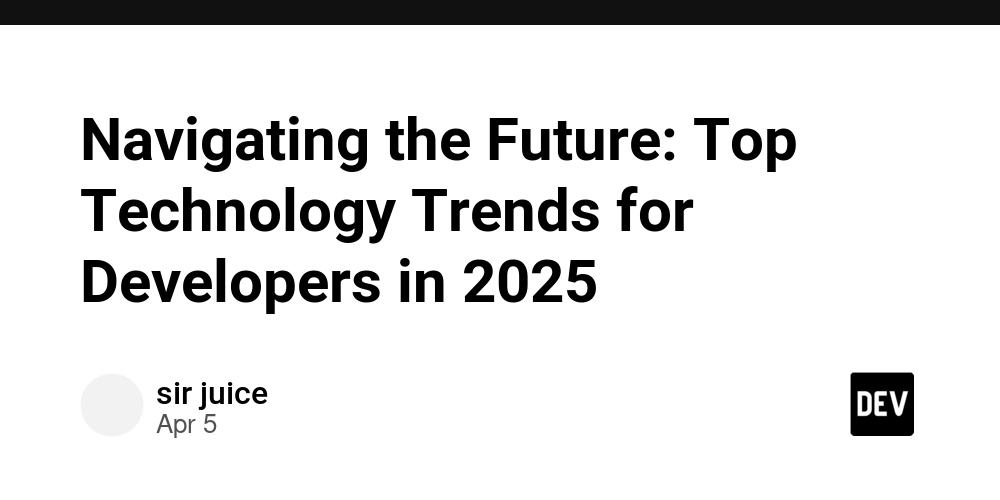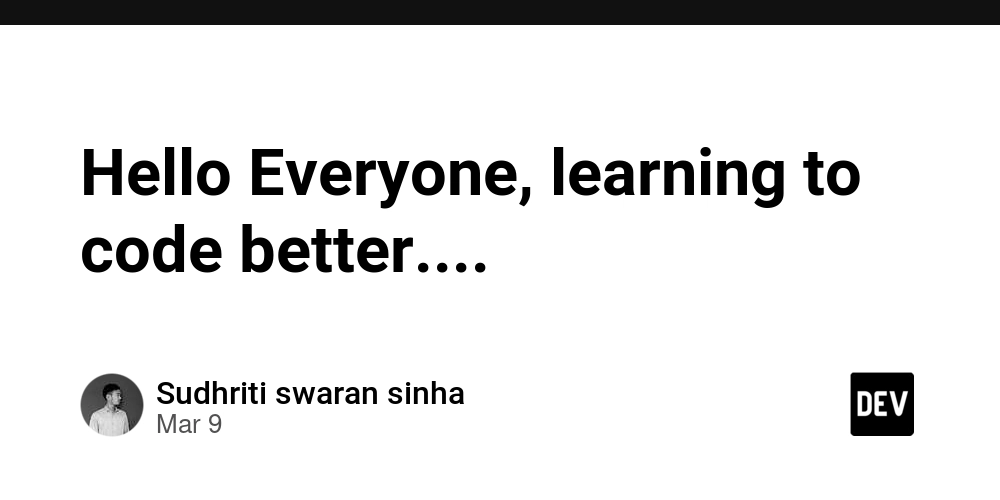Navigating the Future: Top Technology Trends for Developers in 2025
As we step further into 2025, the technological landscape is evolving at a breathtaking pace. Developers today are at the forefront of a transformation driven by artificial intelligence, next-generation connectivity, and novel computing paradigms. In this article, we explore the trends that are not only reshaping how we build software but also redefining the very role of a developer. 1. AI-Powered Development and Agentic AI The rise of generative AI is revolutionizing coding workflows. Tools like GitHub Copilot are no longer mere assistants; they’re evolving into autonomous “agentic AI” that can plan, execute, and even debug code on their own. This evolution means that developers can delegate repetitive or boilerplate tasks to AI, freeing up time for creative problem solving and high-level design decisions. According to industry leaders, up to 95% of routine code might soon be generated by AI, while humans focus on strategizing and innovation. Embracing the New Developer Role As AI augments our capabilities, the developer’s role is shifting from writing every line of code manually to “prompt engineering” and system orchestration. This transition is sometimes described as moving toward “Software Engineering 3.0,” where human creativity and deep understanding work in tandem with AI’s rapid output. 2. Low-Code/No-Code Platforms and Vibe Coding Low-code and no-code platforms continue to democratize software creation. They empower both professional developers and citizen developers to rapidly prototype and deploy applications with minimal traditional coding. Complementing this movement is a new trend known as vibe coding. Introduced by Andrej Karpathy, vibe coding leverages conversational prompts to generate code, allowing even amateur programmers to get their ideas off the ground quickly. Although it’s best suited for prototyping or non-critical projects, vibe coding represents a significant shift in how we think about code production. 3. Next-Generation Connectivity: 5G, 5G-Advanced, and Edge Computing The rollout of 5G and its evolutionary successor, 5G-Advanced, is setting the stage for new application domains. Faster data speeds, lower latency, and higher network capacity are enabling real-time digital twins, enhanced IoT connectivity, and remote operations. For developers, this means new opportunities to build distributed applications and leverage edge computing—where processing happens closer to the user—to deliver seamless, responsive experiences. Impact on Application Development Whether you’re building mobile apps, real-time monitoring systems, or innovative AR/VR experiences, the convergence of 5G with edge computing is breaking down old barriers. This new era of connectivity allows developers to architect systems that can process large amounts of data with minimal delay, transforming sectors from healthcare to autonomous vehicles. 4. Quantum and Neuromorphic Computing: The Next Frontier While still in its early stages, quantum computing promises to solve complex problems that are beyond the reach of classical computers. Recent advances and experimental deployments are starting to hint at the massive potential of quantum algorithms for optimization and cryptography. Likewise, neuromorphic computing—systems that mimic the human brain—could pave the way for energy-efficient AI applications. For developers, keeping an eye on these breakthroughs is essential as they may eventually reshape computational strategies and application design paradigms. 5. The Rise of Serverless Architectures and Edge-Integrated Solutions Serverless computing is another transformative trend. By abstracting away traditional server management, serverless platforms allow developers to focus purely on code and business logic. When combined with edge computing, this paradigm enables applications to scale effortlessly while ensuring minimal latency. Recent literature highlights both the performance benefits and the new challenges of building such systems, urging developers to consider these architectures for modern, resilient applications. 6. Cybersecurity in the Age of Disinformation As digital systems become more complex, so do the threats against them. Cybersecurity remains a top priority, especially with the advent of advanced disinformation tools powered by AI. Developers must now build robust, secure systems that can detect and mitigate malicious activity. Emerging solutions aim to incorporate AI governance and disinformation security measures to ensure that applications remain trustworthy and resilient in an era of digital misinformation. Conclusion The convergence of these trends is redefining what it means to be a developer in 2025. AI-powered coding, low-code/no-code paradigms, next-generation connectivity, and advanced computing technologies are all converging to create a more dynamic, efficient, and creative development landscape. As we navigate this future, continuous learning and adaptability will be key. Embrac

As we step further into 2025, the technological landscape is evolving at a breathtaking pace. Developers today are at the forefront of a transformation driven by artificial intelligence, next-generation connectivity, and novel computing paradigms. In this article, we explore the trends that are not only reshaping how we build software but also redefining the very role of a developer.
1. AI-Powered Development and Agentic AI
The rise of generative AI is revolutionizing coding workflows. Tools like GitHub Copilot are no longer mere assistants; they’re evolving into autonomous “agentic AI” that can plan, execute, and even debug code on their own. This evolution means that developers can delegate repetitive or boilerplate tasks to AI, freeing up time for creative problem solving and high-level design decisions. According to industry leaders, up to 95% of routine code might soon be generated by AI, while humans focus on strategizing and innovation.
Embracing the New Developer Role
As AI augments our capabilities, the developer’s role is shifting from writing every line of code manually to “prompt engineering” and system orchestration. This transition is sometimes described as moving toward “Software Engineering 3.0,” where human creativity and deep understanding work in tandem with AI’s rapid output.
2. Low-Code/No-Code Platforms and Vibe Coding
Low-code and no-code platforms continue to democratize software creation. They empower both professional developers and citizen developers to rapidly prototype and deploy applications with minimal traditional coding. Complementing this movement is a new trend known as vibe coding. Introduced by Andrej Karpathy, vibe coding leverages conversational prompts to generate code, allowing even amateur programmers to get their ideas off the ground quickly. Although it’s best suited for prototyping or non-critical projects, vibe coding represents a significant shift in how we think about code production.
3. Next-Generation Connectivity: 5G, 5G-Advanced, and Edge Computing
The rollout of 5G and its evolutionary successor, 5G-Advanced, is setting the stage for new application domains. Faster data speeds, lower latency, and higher network capacity are enabling real-time digital twins, enhanced IoT connectivity, and remote operations. For developers, this means new opportunities to build distributed applications and leverage edge computing—where processing happens closer to the user—to deliver seamless, responsive experiences.
Impact on Application Development
Whether you’re building mobile apps, real-time monitoring systems, or innovative AR/VR experiences, the convergence of 5G with edge computing is breaking down old barriers. This new era of connectivity allows developers to architect systems that can process large amounts of data with minimal delay, transforming sectors from healthcare to autonomous vehicles.
4. Quantum and Neuromorphic Computing: The Next Frontier
While still in its early stages, quantum computing promises to solve complex problems that are beyond the reach of classical computers. Recent advances and experimental deployments are starting to hint at the massive potential of quantum algorithms for optimization and cryptography. Likewise, neuromorphic computing—systems that mimic the human brain—could pave the way for energy-efficient AI applications. For developers, keeping an eye on these breakthroughs is essential as they may eventually reshape computational strategies and application design paradigms.
5. The Rise of Serverless Architectures and Edge-Integrated Solutions
Serverless computing is another transformative trend. By abstracting away traditional server management, serverless platforms allow developers to focus purely on code and business logic. When combined with edge computing, this paradigm enables applications to scale effortlessly while ensuring minimal latency. Recent literature highlights both the performance benefits and the new challenges of building such systems, urging developers to consider these architectures for modern, resilient applications.
6. Cybersecurity in the Age of Disinformation
As digital systems become more complex, so do the threats against them. Cybersecurity remains a top priority, especially with the advent of advanced disinformation tools powered by AI. Developers must now build robust, secure systems that can detect and mitigate malicious activity. Emerging solutions aim to incorporate AI governance and disinformation security measures to ensure that applications remain trustworthy and resilient in an era of digital misinformation.
Conclusion
The convergence of these trends is redefining what it means to be a developer in 2025. AI-powered coding, low-code/no-code paradigms, next-generation connectivity, and advanced computing technologies are all converging to create a more dynamic, efficient, and creative development landscape. As we navigate this future, continuous learning and adaptability will be key. Embrace these changes and position yourself at the cutting edge of innovation.
What trends are you most excited about? Share your thoughts in the comments below!









































































































































































![[The AI Show Episode 142]: ChatGPT’s New Image Generator, Studio Ghibli Craze and Backlash, Gemini 2.5, OpenAI Academy, 4o Updates, Vibe Marketing & xAI Acquires X](https://www.marketingaiinstitute.com/hubfs/ep%20142%20cover.png)


























































































































![[FREE EBOOKS] The Kubernetes Bible, The Ultimate Linux Shell Scripting Guide & Four More Best Selling Titles](https://www.javacodegeeks.com/wp-content/uploads/2012/12/jcg-logo.jpg)



![From drop-out to software architect with Jason Lengstorf [Podcast #167]](https://cdn.hashnode.com/res/hashnode/image/upload/v1743796461357/f3d19cd7-e6f5-4d7c-8bfc-eb974bc8da68.png?#)







































































































.png?#)




.jpg?#)


















 (1).webp?#)













_Christophe_Coat_Alamy.jpg?#)







































































































![Rapidus in Talks With Apple as It Accelerates Toward 2nm Chip Production [Report]](https://www.iclarified.com/images/news/96937/96937/96937-640.jpg)









































































































































